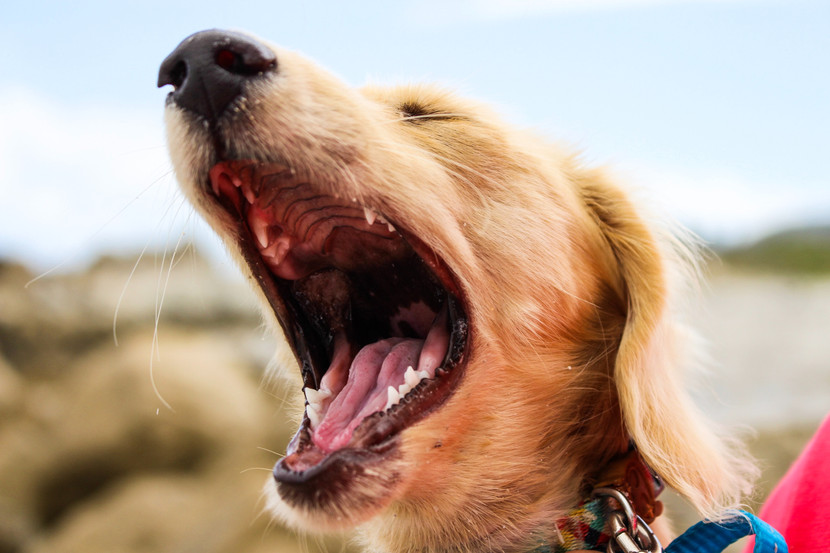But I don’t speak dog...
We communicate in verbal and nonverbal ways ALL of the time. Have you noticed a dog’s behavior change when their handler puts their coat on? How about when they hear food spilling into their bowl? Why is it some dogs jump up and others don’t? Some dogs get on the furniture and others sleep on their dog bed. Training is commonly thought of in terms of basic commands and specific skills. Something that is important to recognize, is that every interaction is part of their education.
Observation.
It is really fascinating, at least to me, just how much dogs pick up from our behavior. This week we’re turning the tables a little and instead of only observing the dogs, let’s observe handlers too! Here are a few common actions and reactions that may be spotted easily:
What does the handler do just before getting the dog’s food? At what point does the dog start paying attention?
What handler behaviors precede leaving the house? Does the dog seem to know when their handler is about to leave? Does the dog react differently for walking clothes vs work clothes?
What is the handler’s reaction if a dog jumps on them?
What behavior does the dog have when their handler is excited? How about sad?
After this period of observation, you may notice the nuanced relationship between the handler’s non-verbal communication and the dogs’ understanding.

Two Way Street
If dogs can read their handlers’ body language so can the handlers. A trainer that can interpret a dog’s concerns, anticipate their behavior, and respond to their cues can better manage and more efficiently adapt a dog’s behavior to their desires. A dog that is making eye contact is engaged. A dog that has a curved back and a tucked tail is feeling uneasy. A dog that
is engaged in a chase is not ready for
a training cue.
Part of having a good relationship is respecting their communication and managing the handler’s effectively. This is also why at-home training is the best place to build the foundation for a dog to develop skills to use away from home. Distractions, stress, and unmet needs can impede focus and result in missed responses and rewards. Prepare everyone for training by meeting energy and basic needs before initiating a session. I do try to withhold meals, depending on the time of day, so that my dog is as food motivated as possible. This also serves as a built-in reward for associating ‘work’ with a benefit when a meal follows each session.
Now that the dog’s basic needs are met and the handler has studied the dog’s communication it’s time to put it all together. Let’s start communicating with body language! When the dog does a behavior that is desired, engage the dog in a way that makes them feel relaxed, happy, and accepted. E.g. Petting, a calm higher-pitched voice, treats, and play. When the dog does a behavior that is not acceptable, respond in a non-rewarding manner. E.g. Disengage, use a deeper tone, with-hold treats, and cease play. Communicating with a dog in a way that they understand and respond to will accelerate your training objectives and create a stronger bond.
Games.
Leave it.
This is a great game for working on a dog’s threshold for impulse control. You will sit with your dog and offer a treat palm open within reach of your dog. Be quick! We don’t want the dog to take it! Close your hand if they go for it and open your hand again when they back off.
Once you can leave your hand open, take the treat with the other hand and give it to your pup. The goal is to teach the dog that they get the food when your hand is open & they leave it alone.
Door game.
No one like a dog who bolts out of the door - let’s make a training game of it! Go to the door as usual and begin to open it. When the dog starts to bolt, close the door. Repeat until the dog waits for your release cue, OKAY, ALL DONE, etc. There isn’t a need to train a command here, but for the dog to read your non-verbal language and adapt patience as the solution for a quick exit.

Red light, Greenlight, and what’s in-between.
Not all communication is non-verbal. We can take the time to teach our dogs some primary words to help them know what we want too. You can choose what words work for you, but you will need to remember them for them to be effective in the moment. The first four words my dogs learn are YES = you get a reward; GOOD = you’re making good choices and are on the way to a reward; UHUH = you’re making choices that move the reward away; NO = you’ve made a bad choice and there will be no reward and a consequence.
Typically in building a strong foundation, food is a fantastic reward, but sometimes play is the reward or walking on a leash in the direction the dog wants, etc. It’s helpful for your dog to know they are on the right track when training so they keep trying; GOOD is a great word for that. UHUH is equally important for helping a dog toward the behavior desired when used more gently and more firmly before a consequence is necessary. I reserve NO for more egregious missteps. Here are a couple of examples: If we are playing tug and my dog bites my hand; that’s a NO and results in a termination of play. If a dog jumps on me; that’s a NO and disengagement.

I like to incorporate teaching these words into the first basic commands. Sit, Down, Come. While I lure a sit I’ll use GOOD as the dog stays focused on the treat and tilts his/ her head back. When their bottom touches the ground they get a YES and a treat. Now I have taught that an upward sweep of my hand means sit, GOOD means they’re on the right track, and YES results in food all in one go! Pretty cool huh?
Keep track of what you have learned about your dog’s communication style during the week. Are they outgoing or reserved? What behaviors of yours was your dog cued in on that you hadn’t realized? Are there other ways you use your body to communicate with your dog?
When play is work, work is play.
Jackie Ward; Citali Dog Training


















Comments